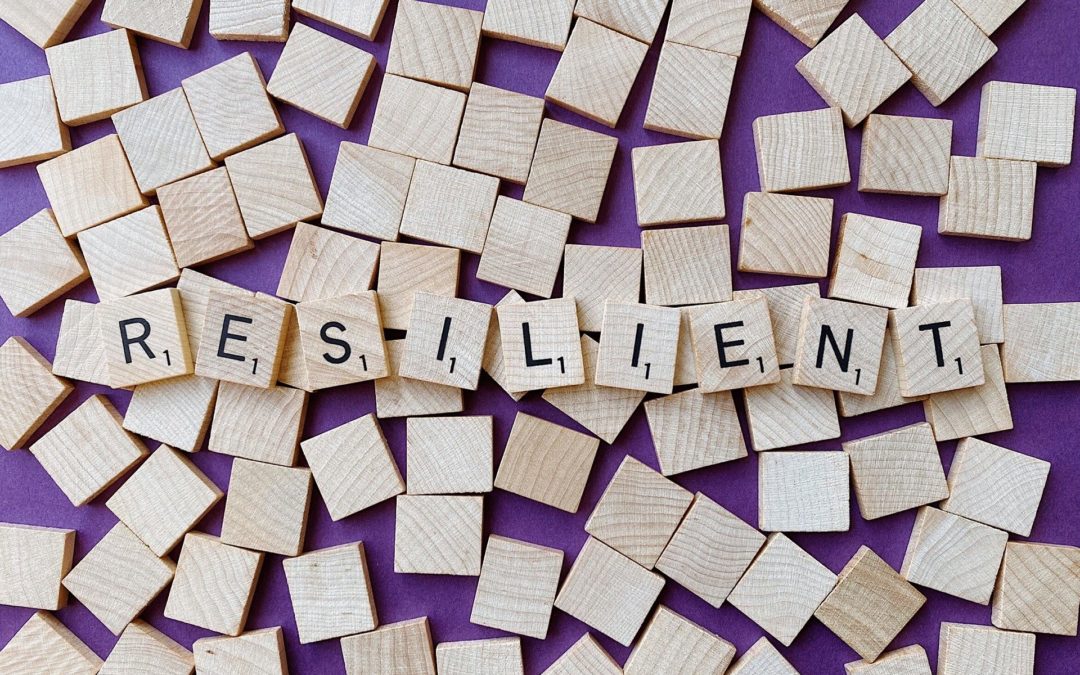Most organization are successful. Organizations that are not successful don’t last very long! So a successful organization is not necessarily a resilient organization. Even successful organizations waste energy and resources. I call this organizational churn. It is that time and energy that is simply wasted because people are not focused on the right work, are not crystal clear about their priorities, or are operating in silos in instead of collaborating across the organization.
These are just three examples. There are many more.
Even though these things hinder top performance, in normal times they are often tolerated as typical efforts to resolve them fail.
In time of disruption, such as COVID-19, these inefficiencies in the organization are not acceptable. They detract from performance, and they contribute to slow responsiveness. The problem is that most organizations tackle these problems at the symptomatic level. They try to solve them through training and improvement in competencies.This does not work.
The attempted solutions do not work because these problems are a result of issues at the structural level of the organization.
Disruption is here. Are you ready for the bounce back?
None of us could have predicted COVID-19. Or its impact. Whether you are cutting back, coasting or scaling, disruption is here now.
Those ongoing inefficiencies and irritants may not have been deal-breakers then. These are different times. Anything that gets in the way of top performance must be addressed.
Consider an objective assessment from a world-class expert that can help you streamline your organization, get everyone focused on the right work, and free you to focus on yours.
The first step is to take a snapshot of your organization. By identifying the problem areas in the organization, you can identify what needs attention to become a resilient organization. The critical aspect is ensuring that you get to the root cause of the issue. Most organizations waste tremendous amounts of time and money trying to treat the symptoms of inefficiency: poor communication, poor teamwork, silos, or too many meetings as examples.
Typically, an organization assessment is both expensive and disruptive. It can create angst amongst employees as it implies: “a consultant is coming in to find problems and assign blame”.
Effective Managers™ has developed an assessment approach that is comprehensive and that provides the benefit of research-based, world-class expertise and insights without disrupting your organization. It helps identify the key root cause issues that can be resolved.
You can learn moire about the Resilient Organization program here.
What is Measured?
The Resilient Organization program uses a combination of virtual interviews and an online surveys to prepare a snapshot of your organization.

– The overall job purpose – from the perspective of each interviewee
– The key duties to which they must attend
– Others in the organization upon whom they depend for their success
– Others in the organization they must support
– Key areas of conflict or confusion which create inefficiencies
– Anything else that gets in the way of the person being as successful as possible.
The confidential online survey will be distributed to all employees for completion. This confidential survey has four parts:
1. Managerial Leadership: questions that obtain feedback on team members’ perceptions of their manager’s relationships with them. In this way we can identify strengths and weaknesses of all those in management roles.
2. Employee Engagement: an organization-wide engagement survey that goes to all employees, asking generic engagement questions and generating a snapshot of engagement. This will show engagement overall and possibilities for improvement. It will also show which functions and departments have the most engaged employees and where improvements are possible.
3. Manager Effectiveness: an organization-wide manager effectiveness survey that is completed only by managers (anyone who managers others), asking questions that measure manager effectiveness. This will indicate areas for improving the focus of managerial work.
4. Corporate Support Systems: an organization-wide survey that is completed only by managers (anyone who managers others), asking questions that measure key support systems. This will help to understand the managerial perceptions of key organization-wide functions
The survey can be completed on average in 11 minutes by managers, and in 6 minutes by employees. The survey is kept short to minimize disruption. The questions in the survey have been designed to be powerful indicators of performance and effectiveness. Open-ended questions are also included which provide full participation by employees and managers so they can provide confidential feedback that will provide insights into performance issues.
What do You get from this Investment?
The results of the interviews and the survey are analysed by me personally. A PowerPoint report will be prepared that includes:

– Identification of key areas for improvement with recommendations
– Managerial Leadership scores with analysis
– Employee Engagement scores with analysis
– Manager Effectiveness scores with analysis
– Corporate Support Services scores with analysis
– Recommendations for improvement including key priorities for action
The report is shared in draft from with the head of the organization for preliminary discussion. I then virtually attend an up to three-hour executive team meeting to present the findings and facilitate a discussion to help you decide on the priority performance improvement initiatives to become a top-performing resilient organization.
Why is this Program of Interest to You?
Here are the four situations where the resilient organization program adds the most value to you and your organization:
Covid-19 response. Organizations, in this time of disruption, need to survive the crisis. The wise owner will use this time to make changes for short-term survival, but with a mind to molding the organization into a very strong core that will be well positioned to bounce back during the recover time. This means having:
1. the right organization design,
2. an accountability framework (people doing the right work and collaborating well); and,
3. having a system to get the right people into the right roles.
There are other aspects to address to improve performance, but the three above account for the vast majority of root-cause issues that hinder top performance in organizations.
Performance Improvement. You are running a successful organization. It has good revenue and reasonable profit. However, you know that the organization is not as successful as it could be. There are issues that keep reappearing. In spite of training and coaching, they keep coming back. It is not unlike the carnival game, Whack-a-Mole. This program provides root-cause insight to help you understand the systemic things that lead to the under-performance that you see. With a methodical approach you can overcome these hindrances. The added bonus is that you will be better positioned as an organization because you will have the resilience to survive future disruptions.
Exit Strategy. You are thinking about selling your company “in a few years”. Of course you need a plan to do this, but you should also be thinking about how you can ensure their organization is performing at it best. Those irritants that have been manageable (lack of focus by executive and managers, silos, poor decision making, getting pulled into the weeds too much) for status quo detract from the ultimate value of the company. This is the time to get an objective, professional assessment that can provide a road map to top performance. Covid-19 is a wake-up call. If there is one certainty, it is that there will be future disruptions. We all need to be prepared.
Due Diligence. A buyer is interested in acquiring an organization. They have good information for all of the output indicators typically based on financials, and they will have a good idea about the assets of the company. They will not have a good idea of what is happening inside the organization – the level of employee engagement, the effectiveness of managers, the perception of internal support systems, the level of performance of managers. These are indicators of the bench strength of the organization, and its ability to scale. It will show weak areas of management where changes may need to be made. And it will show where the managerial strength is that can be leveraged.
Watch Video Here
Click here to watch a free recorded video: The Resilient Organization
Let’s Talk
If this program sounds intriguing, please reach out for a no-obligation chat about how I can help you improve your organization’s performance.






